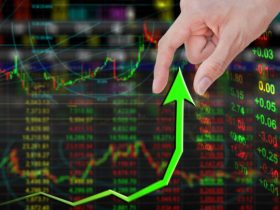When making investment decisions, it can be helpful to know what will move the market. This is where commodities come in. Knowing which commodities are currently in high demand and short supply can give reasonable indications about which direction the market may go next. Understanding this relationship and measuring it is key to having a good idea of what will happen with markets in general. You can read more here.
The price of commodities fluctuates according to supply and demand, so when prices hit an all-time high, there’s probably a shortage somewhere. At a minimum, just knowing that information gives us a head start on determining whether we’re going to see upward or downward pressure on the overall economy. Due to this, supply shortages also mean that inflation will become more significant (when there’s a shortage, the cost of getting the last items goes up). When oil prices were near record levels in mid-2008, a key indicator was that a recession would soon ensue.
So How do Commodities Predict Market Movement?
Traders make their decisions by looking at graphs of these commodities, which are known as ‘commodity charts’. This is simply a graph with some indicator on it that analyzes the commodity’s value. The two most common indicators are moving averages and relative strength index (RSI), both of which can be applied to any commodity or security to get an idea about its historical movement.
The average is the total price divided by how many units there are, while RSI compares today’s closing price for a given period against its range over the last several weeks. For instance, if today’s closing price was higher than any other day within the last three weeks, RSI will be 70%. If there were four days where today’s closing price was higher than any other day, then RSI would be at 80%. Once the indicator hits 100%, that means that today’s closing value has peaked and is likely to decrease.
Long-term traders often use moving averages because they smooth out daily fluctuations in prices. One of the most popular types is the fifty-day moving average, which simply counts how many days there have been since the commodity hit its highest price over fifty days ago, adding up all those numbers to get a picture of where the market might go next.
Another way to measure commodities is by finding out their spot prices, also known as current market rates. Spot prices represent the current cost of purchasing an asset or commodity for immediate or prompt delivery. These prices can vary greatly depending on who’s buying because sometimes market rates are lower if there is more than one buyer or higher if there is only one.
The fact that markets all over the world are interconnected also affects commodity prices. The US Energy Information Administration (EIA) keeps track of how much oil comes out of countries like Saudi Arabia and Iran because those products affect other countries’ production costs. For instance, when oil first reached $100/bbl in 2008, Thailand shut down some offshore drilling rigs. This caused gas prices to spike locally (and globally), making transportation more expensive for any business that needed to ship something across the country or around the world.
Consider all the factors
To get a good idea of what will happen next with commodity prices, traders look at all of these factors as a whole. It’s important to remember that the connection between commodities and the market is not one-to-one; many other factors besides supply and demand affect how much things cost (e.g., interest rates).
Ultimately, knowing what commodity pricing tells us can help investors decide where they want to put their money based on where commodities are trending. Commodities like oil may be volatile in the short term, but they tend to increase in value over time, so an investor who buys at $100/bbl might decide to sell at $200/bbl because they believe that another increase (and decrease) is likely soon.
Traders look at these kinds of charts to predict market movement in commodities by looking for key indicators highlighted above. Another common way to measure commodity prices is with spot prices or current market rates.









